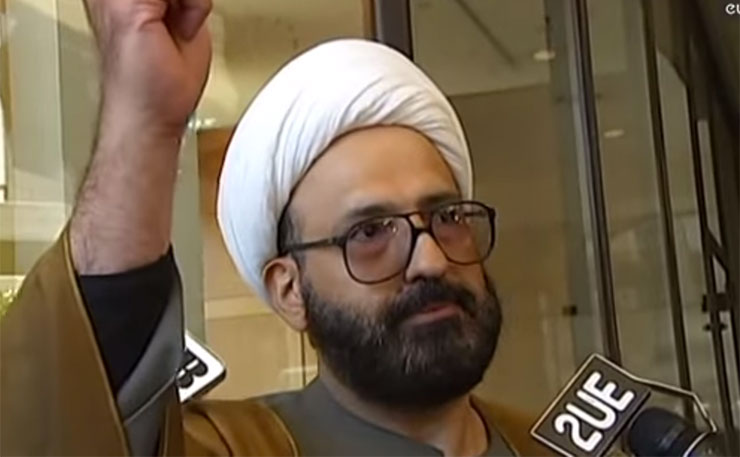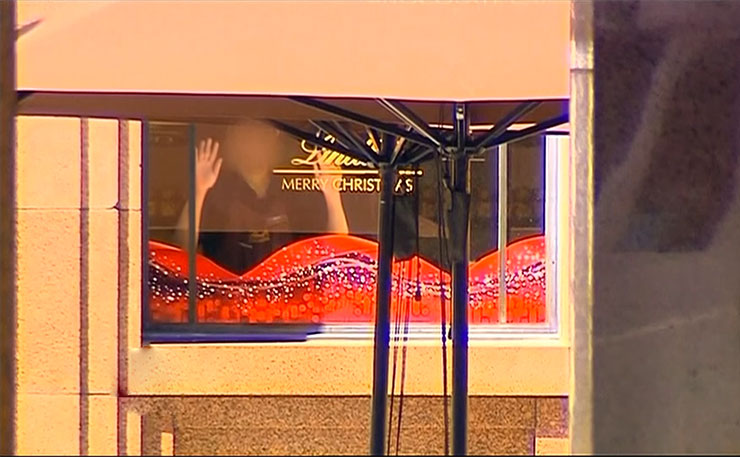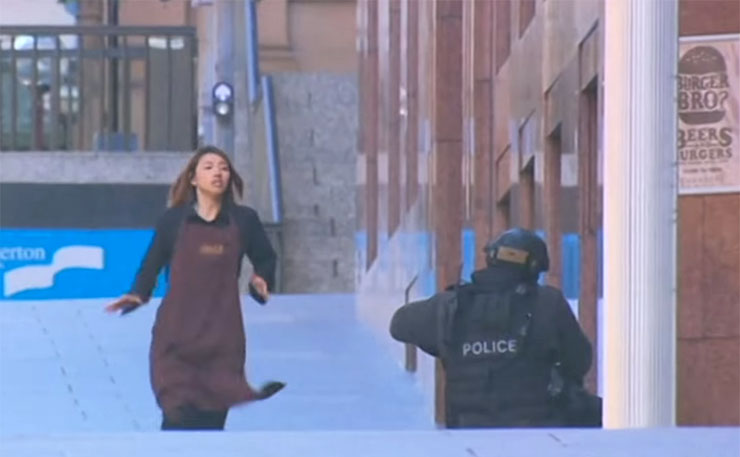On Thursday last week, two days after the harrowing hostage crisis in Martin Place came to an end, Criminologist Mark Lauchs from Queensland’s University of Technology explained the difference between that ordeal and an act of terrorism.
In an interview on ABC radio he said, “This is not the same as a terrorist operation… The first thing [terrorists]do is prove they’re bona fide by taking some form of violent action such as showing they will kill someone. This didn’t happen… So we’re not dealing with a classic terrorist situation.”
Despite presumably being familiar with the definition of terrorism, the Prime Minister, on the other hand, called the incident “a brush with terrorism”, echoing headlines in the mainstream press, including the Financial Review.
Lauchs went on to explain, “Terrorism per se is to cause fear in order to extort a political outcome. It is a significant thing from the point of view of what we class as terrorism. He [Man Haron Monis] was after a personal outcome, not a political outcome… He actually has an ego-driven rather than a politically driven agenda.”
Abbott, in contrast, described the event as “politically motivated violence”.
Which was predictable. And understandable.
There is considerable political capital to be gained by exploiting the tragic events of Martin Place in pursuit of fear.
Eighteen months after 9/11, for instance, survivors in New York City were asked whether they had grown “more liberal, more conservative or stayed the same” following the terrorist attacks. Thirty-eight per cent reported becoming more conservative.
In fact, fear has consistently been found to increase conservatism and support for conservative leaders and policies, including but not limited to counter-terrorism measures. Simply evoking images of death, such as a hearse or a chalk outline of a human body, leads people of all political persuasions to more strongly endorse conservative positions on issues as varied as taxation, same sex marriage and stem cell research.
That imagery has this effect is noteworthy. Simply using a word or phrase that evokes death related imagery – such as the word ‘terrorism’ – is enough.

There are a number of reasons that fear holds such utility for governments, particularly of the conservative persuasion.
It is often said that fear is a great motivator. But it is also a great immobiliser.
When human beings fear for their life or safety, primal or “mammalian” parts of the brain take over. These brain areas operate automatically, are responsible for keeping us safe and alive, and drive the mental and physiological correlates of fear.
At the same time our frontal lobes, the seat of “executive function”, or the ability to reason, plan, resist impulses and make decisions, are dulled.
There is probably no better way to achieve a societal dumbing-down.
In a state of mortal alarm, people become hypervigilant to threat and narrowly focussed on threat-related information. They are also driven to operate in one of three modes; fight, flight or freeze. As these mechanisms are designed to keep us alive, they operate powerfully and can be difficult to override.
The fight mode involves being on a hair-trigger to attack anything that a watchful brain perceives as dangerous. Individually this can manifest in pugnaciousness and aggression, for instance harassment and violence towards social groups deemed a threat.
At a societal level it manifests as increased support for institutionalised violence, particularly the military. For example, support for military spending increased among survey respondents following the attacks of 9/11 and has been found to correlate with general physiological sensitivity to threat, including reactivity to images of spiders.
The flight mode involves avoiding activities perceived as dangerous, such as opening our borders to anyone who might remind us of those depicted as terrorists. After the Madrid terrorist attacks of 2004, for example, survey respondents not only endorsed more conservative values but also scored higher on measures of prejudice.
The freeze mode involves immobility; becoming passive and inert in the hopes of escaping harm. Societally this is likely to breed submissiveness and surrender, for instance to curtailment of freedoms and rights in the interests of protection.
The current conversation around failures of Australia’s intelligence system are a case in point. Tony Abbott has said that he wants to ascertain why Monis was not on a counter terrorism watch list. He has expressed the view that intelligence and security was inadequate in this case, adding weight to his government’s emphasis on security in its delicate balance with liberty.
Lauchs, however, says, “This is much closer to a mental health issue than a terrorism issue. And none of the mechanisms that we have or will ever have in the future, in order to profile people who are in the terrorist community, they will not have prioritised this person. The mechanisms that we use to look for terrorist operations will not pick this person up. He was a threat to the community but it’s a mental health threat.”

It is stating the obvious to point out that Monis is not the first person for whom psychiatric issues have become chaotically intermingled with fragmented religious notions.
As Lauchs says, “Just because he made protestations of connections to IS doesn’t mean that he had any connections with them or even understood what they were about.
“We really should have been looking at the mental health processes that he slipped through rather than the military and other intelligence processes.”
The conversation about stronger counter-terrorism measures, then, misses the point. The more pertinent conversation is how to manage mental health difficulties and associated risk factors more effectively.
Which would double as a recovery conversation for the nation. In the wake of trauma, an important task is to gain realistic and balanced perceptions of what happened and why, and of ongoing danger and threat.
It is natural after a traumatic ordeal to over-estimate risk. The brain is prone to false alarms. Evolutionarily speaking, it is better to jump at the sight of a twig than to ignore a snake.
However, chronic hyper-vigilance and elevated threat perceptions are a pathway to post-traumatic stress. And that carries a political benefit of its own. Chronic symptoms of post-traumatic stress disorder following 9/11 correlated with political conservatism and conservative shift.
Linking the Martin Place hostage crisis with terrorism, casting a shroud of vulnerability across the nation, will inevitably inflame debilitating anxiety conditions in susceptible individuals, providing a political benefit at enormous individual and social cost.
What is needed instead is an unfailing commitment to the truth of what happened, what it means about and for our society, and an effort to learn from it in an honest way.
To prevent Australians from becoming scarred in the aftermath, we require leadership in making genuine and constructive sense of this awful event.
So far, a criminologist from Queensland University of Technology is leading the way.
Donate To New Matilda
New Matilda is a small, independent media outlet. We survive through reader contributions, and never losing a lawsuit. If you got something from this article, giving something back helps us to continue speaking truth to power. Every little bit counts.




